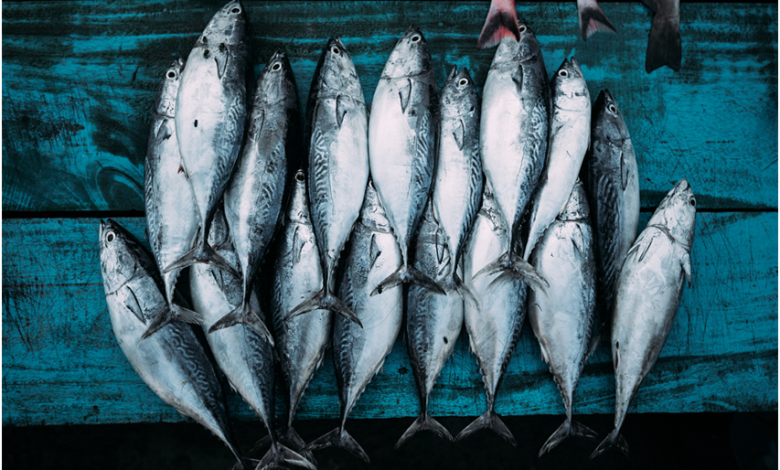The Future of Fish Processing: Innovative Fish Grading Technologies

The fish processing industry has long been a cornerstone of food production, providing a vital link between the ocean’s bounty and the consumer’s table. However, traditional methods of fish grading and sorting have often been labor-intensive, time-consuming, and less accurate. With the advent of new technologies, the industry is undergoing a transformation that promises greater efficiency, sustainability, and profitability. This article aims to shed light on some of these innovative fish grading technologies that are shaping the future of fish processing.
Automation and Robotics
One of the most significant advancements in fish processing is the integration of automation and robotics. Automated systems for fish grading are now capable of sorting fish by weight, size, and even quality at a speed that manual labor simply cannot match. These systems use advanced sensors and machine learning algorithms to make quick and accurate decisions. The result is a more streamlined operation that reduces labor costs and increases throughput.
Vision Systems
Another groundbreaking technology is the use of vision systems. These systems employ high-resolution cameras and advanced image processing software to inspect fish for various quality parameters such as color, texture, and shape. By doing so, they ensure that only the highest quality fish make it to the market, thereby enhancing brand reputation and consumer trust. Vision systems can also detect defects or foreign objects in the fish, adding an extra layer of safety.
Artificial Intelligence and Machine Learning
Artificial Intelligence (AI) and machine learning are also making their mark on fish grading technologies. These technologies can analyze vast amounts of data to predict trends and make real-time adjustments to the grading process. For example, AI can predict the optimal time for harvesting fish based on various factors like water temperature, fish behavior, and market demand. This ensures that the fish are of the highest quality when they reach the consumer.
Internet of Things (IoT)
The Internet of Things (IoT) is another technology that has significant implications for fish grading. Sensors can be placed in various parts of the processing line to collect data on temperature, humidity, and other environmental factors. This data can be analyzed to optimize the processing environment, thereby improving the quality and shelf life of the fish. IoT can also facilitate remote monitoring and control of the processing line, allowing for more flexible and efficient operations.
Sustainability
Innovative grading technologies are not just about efficiency and profitability; they also have a role to play in sustainability. Automated systems reduce waste by ensuring that fish are graded more accurately, meaning fewer high-quality fish are discarded. Vision systems can help in the early detection of diseases, allowing for timely intervention and reducing the need for mass culling. AI and IoT can optimize resource use, thereby reducing the industry’s environmental footprint.
Regulatory Compliance
New technologies also make it easier for fish processors to comply with increasingly stringent food safety and quality regulations. Automated systems come with traceability features that can track each fish from the ocean to the consumer. This makes it easier to identify and recall specific batches in case of contamination. Vision systems can generate detailed reports on quality parameters, providing objective data to support compliance efforts.
Computational Fluid Dynamics in Fish Grading
For engineers and scientists with a focus on machinery and equipment, the application of Computational Fluid Dynamics (CFD) in fish grading technologies offers a fascinating avenue for research and development. CFD is a branch of fluid mechanics that uses numerical analysis to solve and analyze problems involving fluid flows. In the context of fish processing, CFD can be employed to optimize the design of water flumes, conveyor belts, and other equipment where fluid dynamics play a critical role.
Fluid-Structure Interaction
One of the key challenges in fish grading is the fluid-structure interaction that occurs when fish are transported through water channels or sorted using water-based systems. Engineers at a CFD consultancy firm can use computer simulations to model these interactions, providing insights into how fish respond to different flow patterns. This data can be invaluable for designing equipment that minimizes stress on the fish, thereby improving their quality and overall yield.
Optimization of Sorting Mechanisms
CFD can also be used to optimize the design of sorting mechanisms, such as rotary drum screens or vibrating tables. By simulating the flow of water and fish through these systems, engineers can identify bottlenecks or areas where fish may become damaged. Subsequent design iterations can then be tested virtually, speeding up the development process and reducing the need for costly physical prototypes.
Energy Efficiency
From an engineering standpoint, energy efficiency is a critical consideration in the design of any industrial equipment. CFD simulations can help engineers evaluate how different design modifications impact the system’s energy consumption. For example, optimizing the shape of water nozzles or the angle of conveyor belts can lead to significant energy savings over the long term.
Real-time Monitoring and Adaptive Systems
Integrating CFD simulations with real-time data from sensors can create adaptive systems capable of adjusting to changes in fish size, density, or flow rate. This opens the door for more intelligent, self-optimizing fish grading systems that can adapt to varying conditions without human intervention.
Collaboration with Academia
Given the complexity of CFD simulations, collaboration between industry and academia is often beneficial. Research institutions can provide the computational resources and expertise needed to conduct advanced simulations, while industry partners can offer practical insights and real-world data to validate the models.
By incorporating Computational Fluid Dynamics into the design and optimization process, engineers and scientists can push the boundaries of what is possible in fish grading technologies. This not only leads to more efficient and effective systems but also opens up new avenues for research and innovation in this rapidly evolving field.
Challenges and Considerations
While these technologies offer numerous benefits, they also come with challenges such as high initial costs and the need for skilled personnel to operate and maintain the systems. However, the long-term gains in efficiency, quality, and sustainability often outweigh these challenges, making it a worthwhile investment for forward-thinking businesses.
The fish processing industry is on the cusp of a technological revolution, driven by innovations in automation, vision systems, AI, and IoT. These technologies are not only increasing efficiency and profitability but also contributing to sustainability and regulatory compliance. As the industry continues to evolve, embracing these technologies will be crucial for businesses that want to stay competitive in this ever-changing landscape.



